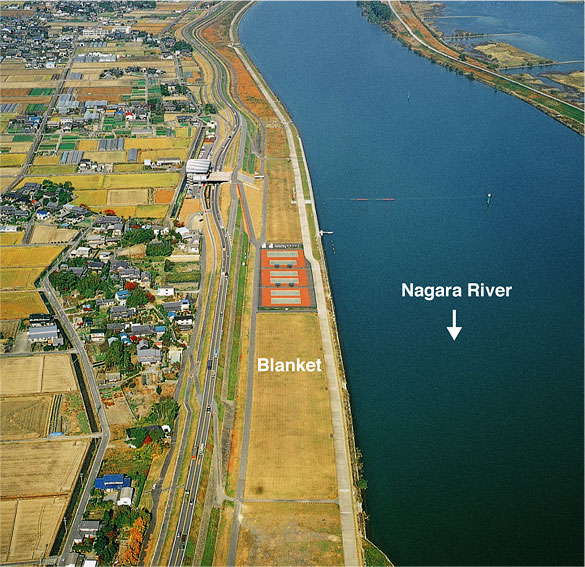Countermeasures Against Inflowing Water
In order to prevent saltwater intrusion, at the Nagaragawa Estuary Barrage, the river level is controlled so as to remain at T.P. +1.3 m to T.P. +0.8 m upstream of the barrage, assuming that, in view of the tidal conditions such as spring and neap tide levels, the upper limit should be T.P. +1.3 m (mean sea level, i.e., T.P. +1.2 m, plus 10 cm). As a result, tidal action does not occur upstream of the barrage, and the water level remains at around the high tide level. As a means of seepage control, therefore, blanketing (covering the high water channel bed with a 60-centimeter-thick layer of cohesive soil) and planar drainage facilities were provided (see the illustration below). The blanketing work, about 50 to 70 m wide, was provided over a distance of about 25 km upstream of the barrage.
In normal conditions, the stream of the river is kept away from the levee by the blanket. Together with the bank foot channel and the cut-off channel, etc. that are built in the protected low land, the blanket safely drains any infiltrating water and prevents the ground water level from rising. When the river is flooded, it protects the base portion of the bank from the flow and improves the safety against water infiltration. The blanket also provides a recreational area for the inhabitants and a pleasant area of natural environment.
Levee, blanket and river level


Completed blanket